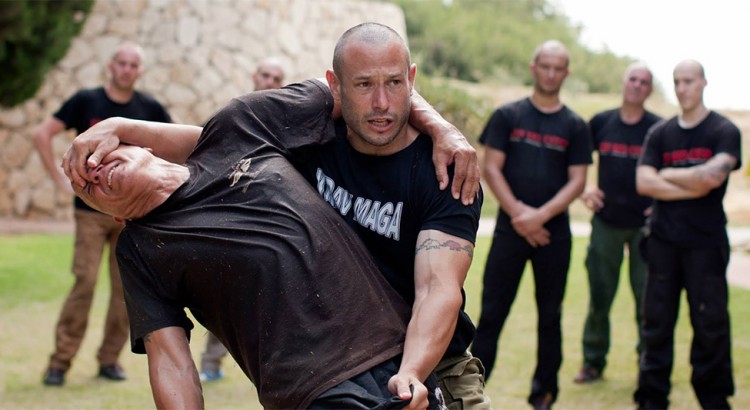More and more people in the U.S. have been seen signing up for Krav Maga courses recently. Famous Hollywood A-listers that are now known Krav Maga practitioners include Tom Cruise, Jason Statham and Daniel Craig as well as Hillary Swank, Ashton Kutcher, Brad Pitt and Angelina Jolie. So, is it a new fad or does it have something for real to offer?
What It Is and What It Is Good For
Krav Maga is an integrated tactical mixed martial art/combative and self-defense system that was first developed for use by the Israeli Defense Forces. When the progenitor of the system, Imi Lichtenfeld, retired from military service, he developed a version that is more suitable for civilians. He opened the first Krav Maga school in 1971. Soon other schools followed. Krav Maga also started to spread fast beyond the borders of Israel.
Krav Maga, which literally means “contact combat,” is an amalgamation of the most effective techniques of boxing, aikido, judo, wrestling, jujitsu, kickboxing, and street fighting into one fluid, fighting military discipline that stresses continuous motion, simultaneous defense and offense, and focusing attacks on an assailant’s most vulnerable points like his eyes, neck or throat, face, foot, fingers and groin. Being a hybrid system, Krav Maga shares many similar striking and grappling techniques with the other more traditional forms of martial arts. What differentiates it from these other fighting disciplines though is its approach to the mindset, tactics training methodology.
Most traditional martial arts involve practicing certain prescribed “katas” or rituals, observing certain traditions, and abiding by certain sporting rules and point-scoring systems. Krav Maga’s main, if not sole, concern is to neutralize an immediate threat as quickly as possible. Since your aim here is to dominate and incapacitate an attacker as soon as possible, you do whatever you have to do to in order to gain the upper hand. When your life is on the line, you don’t worry that you’d be called for a “foul” when you gauge out the eyes or you of bite off the ears of your attacker.
Krav Maga was also designed to be learned quickly. Even a military-grade Krav Maga instructor course just takes five weeks to complete. It was meant to be kept as simple as possible so that it could be put to use as soon as possible. In Krav Maga, there aren’t any choreographed katas or movement patterns to learn and memorize, only battle-tested strikes, holds, and blocks that have been proven effective in real-life dangerous situations and that can be properly executed within split seconds.
Basic Tactics
Krav Maga encourages students to be constantly aware of their surroundings while dealing with a threat in order to spot potential additional attackers, to look for possible escape routes, and to be ready to pick up any object that can be used as a weapon of opportunity to defend and for offense. It teaches them how to improvise and use any object at their disposal as a weapon, including keys, pens, belts, and chairs, to neutralize opponents as quickly as possible.
Another basic tactical move is to always go for the attacker’s vulnerable soft tissue and pressure points. Many counterattack strikes involve eye gouging, groin attacks, and strikes to the throat. In addition to the strikes, Krav Maga teaches a number of subduing techniques like joint-locks and choke-holds that will allow you to exert control over your attacker and put you in a position to end the threat quickly.
While many martial arts treat defensive and offensive moves as separate and discrete actions, Krav Maga techniques combine every defensive move with a simultaneously executed offensive attack. For example, if an attacker goes for your throat, you’d not only try to deflect his attack, but also simultaneously counter with a strike to his eyes, throat or groin. Krav Maga trains and conditions students to execute defensive and offensive movements in one continuous motion instinctively.
Training
While the Krav Maga techniques are by themselves simple and easy to keep in mind, the ability to execute them properly from instinct alone rather from some memorized pattern has to be ingrained deeply in the students through intensive conditioning training. Your body has to be finely tuned so that it becomes a living lethal weapon. Practitioners are given rigorous drills where they have to execute the techniques from a position of disadvantage. They will be trained how to use simultaneous defensive and offensive movements under mental duress and physical fatigue. There are given exercises that are meant to get the students surprised, disorientated and exhausted that simulate the conditions typically present in real-life dangerous confrontations. During these drills, they can practice the techniques under stress. After all, in real life, no right-thinking bad guy will wait for you to get in your favorite fighting stance before attacking.
Because of the hard physical workout and the full contact practice drills, almost all Krav Maga schools require their students to come with protective gear – hand wraps, groin guard, mouth guard, boxing gloves, grappling gloves, head-guard with grill, forearm guards and Muay Thai shin guards.
